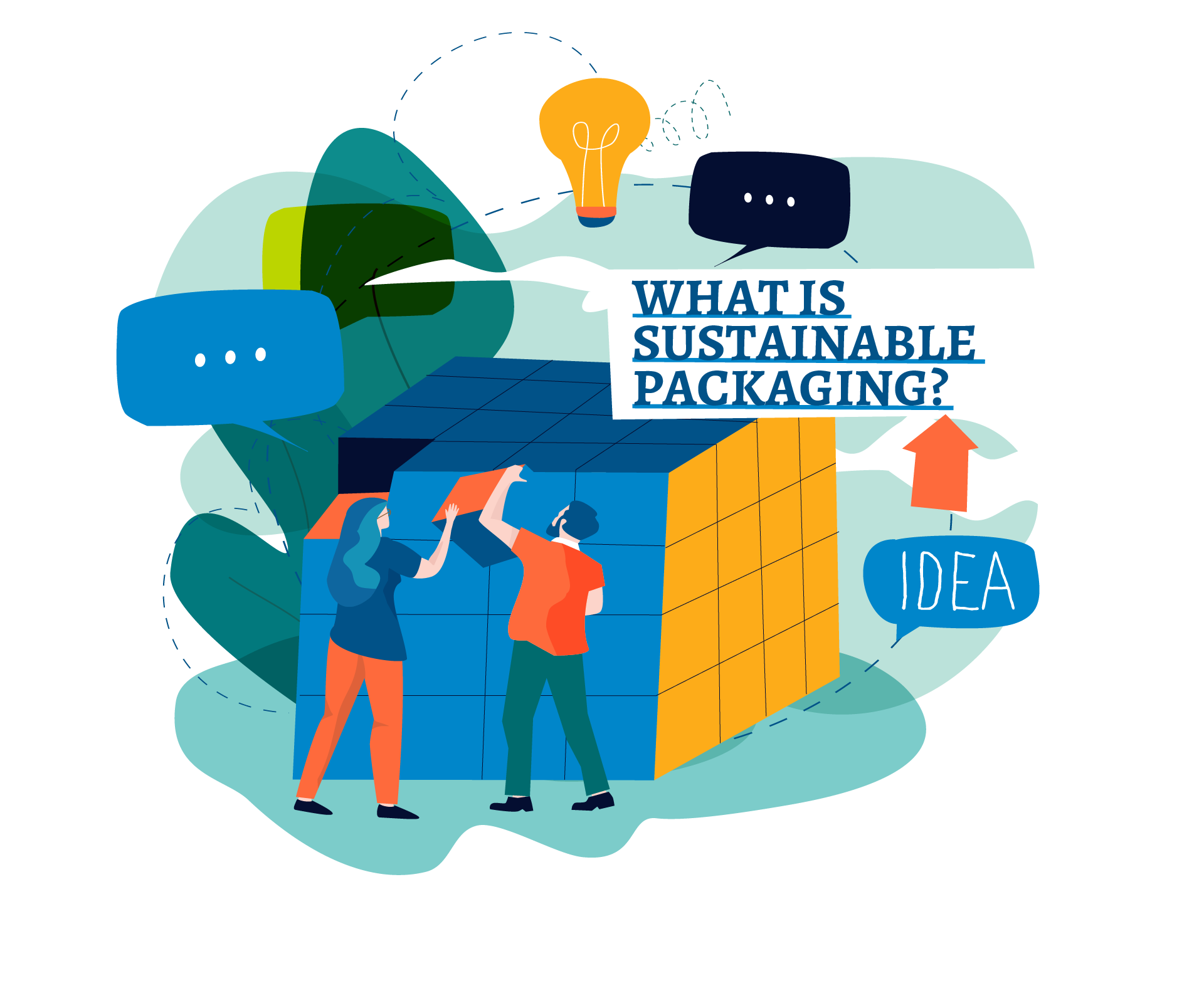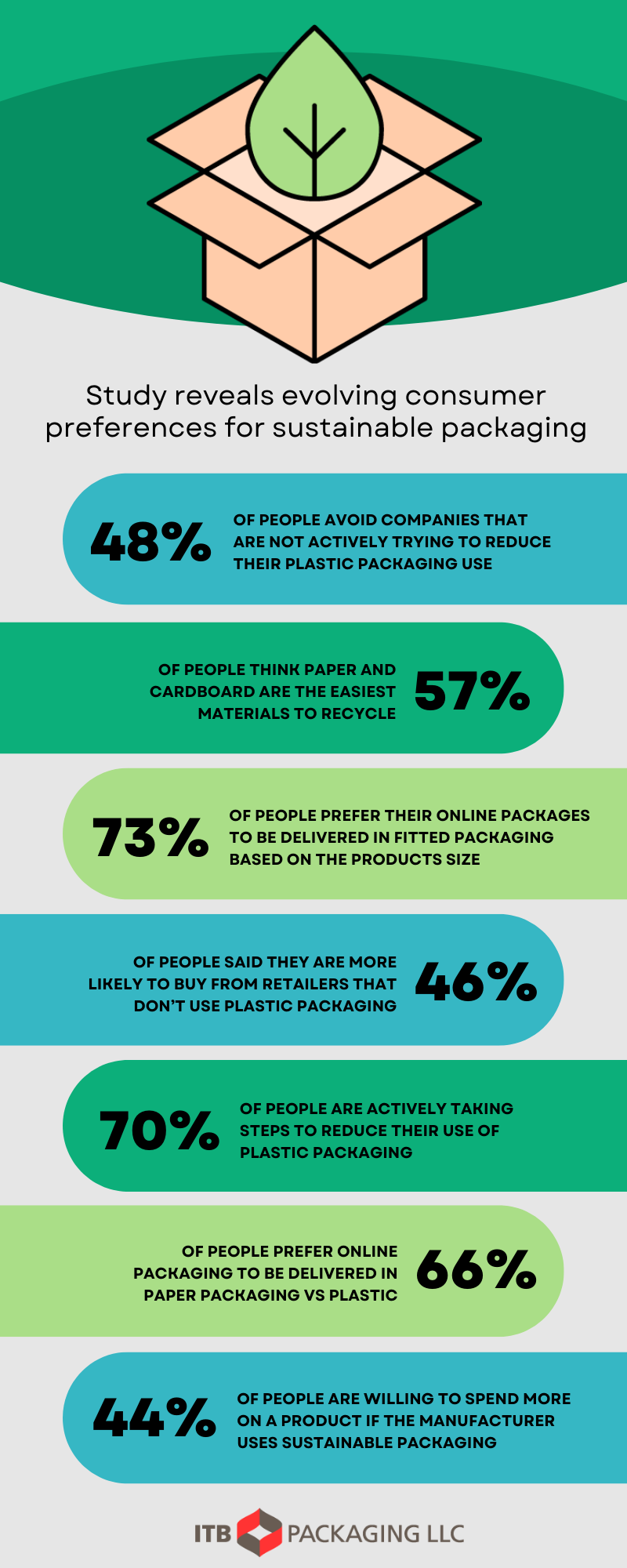“There is no such thing as ‘away’. When we throw anything away it must go somewhere.”
– Annie Leonard
OVERVIEW
As resources become scarcer and climate change becomes more pronounced, more companies are pushed toward the front line of environmental protection, and the necessity for sustainable packaging solutions becomes increasingly evident. According to new research by Greenpeace, only 5% of the mountains of plastic waste generated by US households last year was recycled (you can download the report here), and waste packaging from the newly legalized marijuana industry is adding to the current crisis of plastic waste. Businesses must begin to look outside of their comfort zone in order to meet the challenges of today’s rapidly changing global environment, slowly shifting toward a circular economic model.
Moreover, the consumers’ view is starting to shift as well: the 2021 Global Buying Green Report found that 67% of consumers value products packaged in recyclable materials, while 54% of them consider eco-friendly packaging when making the purchase decision. 83% of respondents are open to paying more for products shipped in sustainable packaging.
In today’s article, we are going to dive into the essentials of sustainable packaging and its main advantages:
WHAT IS SUSTAINABLE PACKAGING?
The sustainable packaging definition generically covers any type of packaging that implies a lower environmental impact. Sustainable packaging initiatives can be assessed according to the following variables:
- Sustainability – determined by compostability, reusability and recyclability
- Performance – determined by how well the packaging protects the products compared to less sustainable packaging alternatives
- Sortability – how easily can the packaging be sorted at MRFs and what can be done with it post-recycling
- Cost
In addition, the Sustainable Packaging Coalition (SPC), a membership-based collaborative of businesses and industries desiring to make packaging more sustainable, has identified eight factors that make up a sustainable package.
Sustainable packaging is:
- Beneficial, safe, and healthy for individuals and communities throughout its lifecycle
- Able to meet market criteria for performance and cost
- Sourced, manufactured, transported, and recycled using renewable energy
- Able to maximize the use of renewable or recycled source materials
- Manufactured using clean production technologies and best practices
- Made from materials healthy in all probable end-of-life scenarios
- Physically designed to optimize materials and energy
- Effectively recovered and utilized in biological and/or industrial cradle-to-cradle cycles
WHAT ARE SUSTAINABLE PACKAGING MATERIALS?
Various sustainable packaging materials are available today, each with different benefits and drawbacks. Some of the most common sustainable packaging materials include paper and cardboard (as they can be recycled 5-7 times), organic fabrics (hemp, organic/recycled cotton, palm leaves, etc.), and biomaterials (mushrooms, cornstarch, seaweed).
EXAMPLES OF SUSTAINABLE PACKAGING PRINCIPLES
By using sustainable packaging techniques, businesses are able to reduce the amount of material and resources used as well as save money in the long run. Some of the most popular sustainable packaging techniques include:
Bundling. Bundling is when products are shipped together instead of individually packaged. For instance, a retailer could bundle several small items instead of putting each in its own box. This reduces the amount of cardboard or other materials needed to ship the products to a customer’s house. Another way to use bundling is to bundle two or more products together and put them in packaging generally meant for one product.
Moving more with less. Moving more with less refers to reducing the amount of space an item must be packaged into while ensuring it reaches its destination safely. This is accomplished by finding alternative ways to package an item besides using traditional foam or bubble wrap.
Increasing density. By reducing the amount of space that each unit takes up in the package, the amount of material used is decreased while maintaining its original functionality. ITB’s innovative custom packaging solutions, for example, can raise packing densities by 12-18% (compared to die-cut solutions) and up to 100% when Interleaf systems are used while providing class A product protection. Our solution caters to all major industries, from beverage, retail, health, and e-commerce to electronics, manufacturing, and automotive.
Utilizing fewer materials and resources. The first way that packaging can be made sustainably is by using less material overall. This may seem like an obvious solution, but it can easily be overlooked. When you are thinking about the design of your new package, you should have in mind the bare minimum of materials needed to accomplish the task. For instance, if you are designing the packaging for a pen, instead of thinking about what the perfect box or tube would look like for your product, think about how it could be made from one piece of cardboard that requires no glue and uses no other materials besides ink. And then think about how you could accomplish this feat.
WHAT ARE THE ADVANTAGES OF SUSTAINABLE PACKAGING?
Cost-effective. Traditional packaging materials are cheaper than sustainable alternatives like recycled content or biodegradable plastics, but the long-term savings that come from the reusability of sustainably packaged products can balance out the upfront costs considerably. Since you don’t have to buy new materials every time something needs to be shipped out or returned, you can recoup your initial investment in no time.
Minimizes your carbon footprint. Using sustainable packaging will help to reduce your carbon footprint. Your products are packaged in materials that have been produced with minimal energy consumption and have little or no negative impact on the environment. They also contain recycled content, and they are recyclable at the end of their life cycle. This means that they are more cost-effective than conventional packaging materials and can reduce waste disposal costs by using fewer resources during production and transport.
At the same time, because sustainable materials can be recycled or reused instead of being thrown away as trash, they help reduce landfill overload. This reduces pollution caused by incineration or dumping in landfills where there’s no oxygen for anaerobic bacteria to break down organic material, releasing methane gas which is highly damaging to our environment.
Supports your branding efforts. Packaging plays a vital role in how your customers perceive your products. If you use eco-friendly or sustainable packaging, your products will be associated with environmental friendliness and responsibility, which is essential these days since many consumers have become aware of their purchases’ effects on the environment. This is especially true within the beauty and personal care industry, where informed customers place high importance on eco-conscious packaging.
Also see 7 Advantages to Sustainable Packaging.
WHAT IS THE FUTURE OF SUSTAINABLE PACKAGING?
Sustainable packaging has evolved over the last few years. Large companies have begun to understand the importance of going green, and consumers have begun to realize that sustainable packaging benefits not only the environment but also their pockets. The future of sustainable packaging is certain: it will continue to evolve as companies try to appeal to the growing number of socially conscious consumers.
By 2050 experts have predicted that there will be about 937 million tons of plastic in the ocean and only 895 million tons of fish. Not only is plastic devastating to the environment, but the economy is suffering as well. A massive 95% of plastic packaging does not get recycled each year, equating to an annual loss of $80 to $120 billion! Those two statistics alone are reasons to establish new and more sustainable ways of packaging merchandise.
The growth of sustainable packaging isn’t limited by geographic boundaries: we can expect the same trends in sustainability will continue to spread throughout countries worldwide.
An empirical study, conducted in 2020 by independent research company, Toluna, showed a positive correlation between sustainable packaging and consumer preferences. Due to the catastrophic effect that plastic packaging has on our planet, many consumers are actively avoiding companies that are not diligently seeking alternative packaging solutions, such as paper or cardboard.
- 48% of people avoid companies that are not actively trying to reduce their plastic packaging use.
- 57% of people think paper and cardboard are the easiest materials to recycle.
- 73% of people prefer their online packages to be delivered in fitted packaging based on the products size.
- 46% of people said they are more likely to buy from retailers that don’t use plastic packaging.
- 70% of people are actively taking steps to reduce their use of plastic packaging.
- 66% of people prefer online packaging to be delivered in paper packaging vs plastic.
- 44% of people are willing to spend more on a product if the manufacturer uses sustainable packaging.



